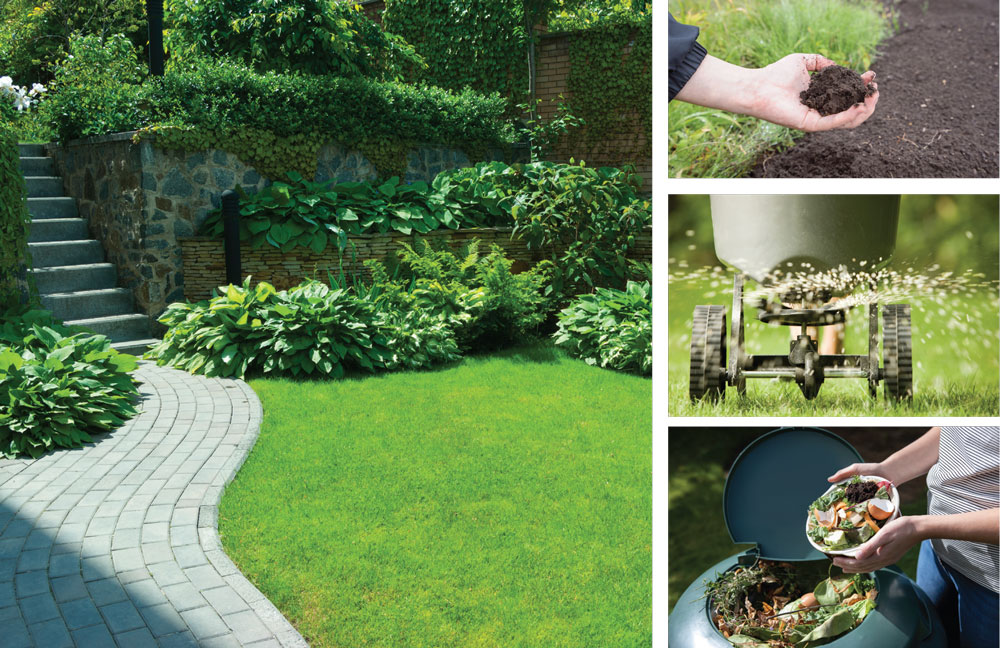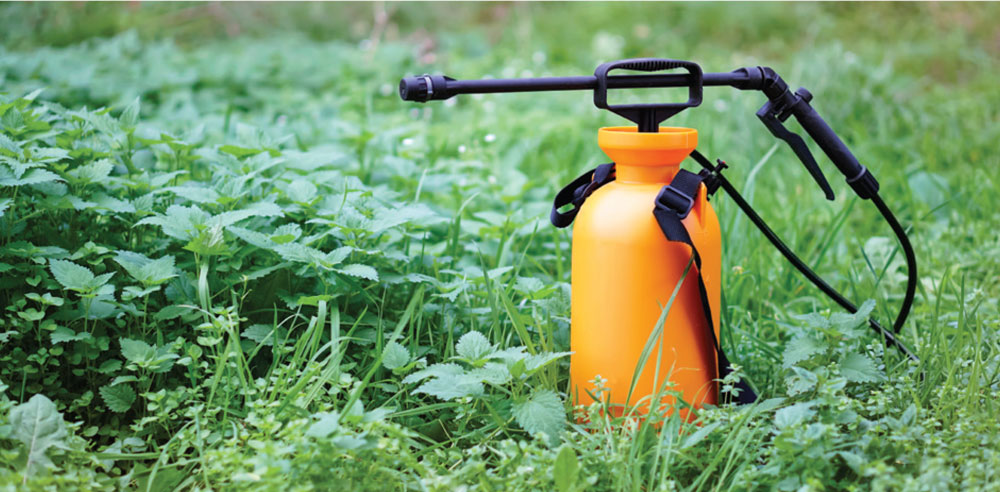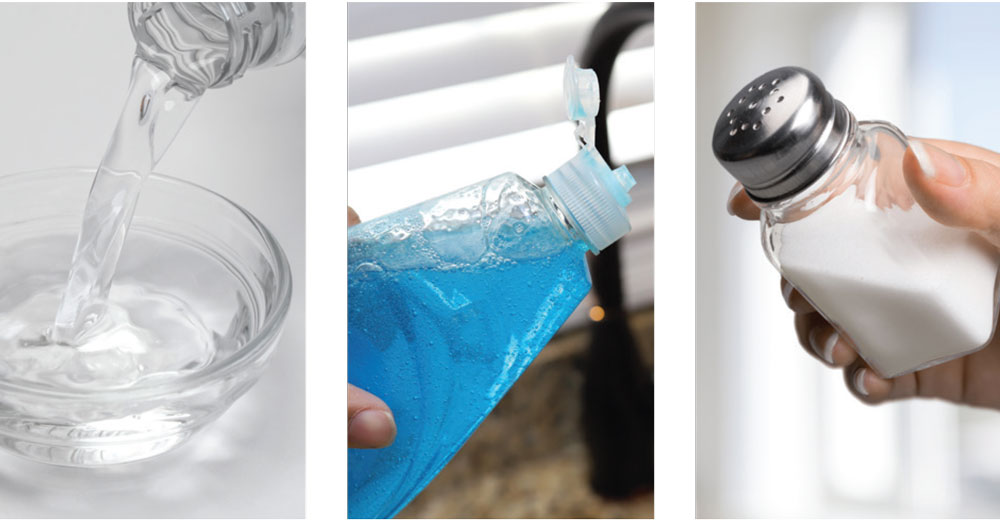While a lush lakeside landscape is picturesque, beautiful lawns require fertilizers and weed controllers, which contain nitrogen and phosphorus. Excess nitrogen and phosphorus run-off promotes algae bloom in streams and lakes, which leads to fish kills, foul odors and bacteria. This bacterium causes gastro-intestinal problems, skin and eye irritation and breathing difficulty.
Achieving the ideal lawn and not harming the lake may seem challenging, but it is possible. Once you understand the science, it is easy. It is all about balance and education.
What your lawn needs
Vigorous plant growth comes from the right balance of minerals, water and sunshine. Nutrient needs vary depending on soil conditions and grass type. Fertilizers should be applied at the correct rate to provide the necessary nutrients.
To know what your lawn needs, test the soil. Kits are available at local hardware stores and local Cooperative Exchange offices. Once the results show your lawn’s deficiencies, ask your local garden store to recommend organic products that contain these specific compounds. The numbers on an organic fertilizer label refer to the concentration (percent) of three major nutrients: nitrogen (or N), phosphate (or P2O5), and potassium (potash, or K2O). Nitrogen gives lawns that lush green color; phosphate encourages thick grass and vigorous growth; and potassium promotes deep roots and healthy cellular structure.
When using organic fertilizers, the most important factor is using the correct amount and proper timing. When the lawn absorbs the nutrients for energy and development, less minerals run off. Keep in mind: fertilizing promotes growth that requires water. Therefore, timing is essential. The best time to fertilize the lawn is late afternoon or early evening when the sun is not so hot. Overnight the ground will absorb the nourishment leading to maximum results.
Read the directions on the container. Depending upon its composition, the manufacturer recommends either dry or wet application.
Things to remember
- Early spring is the optimum time to apply fertilizer. During this period, with proper water and sunlight, plants absorb the most nutrients.
- Never apply fertilizers to frozen ground.
- Different fertilizer products contain various nutrient concentrations that are released at different rates. Therefore, some organic fertilizers are better for certain grass types.
- One early spring application followed by one or two lighter fertilizer applications later in the season often yield better results and reduce leaching by improving nitrogen intake.
- Fertilizing in the fall has been shown to cause groundwater degradation. Many homeowners with fescue lawns traditionally fertilize in fall. Consider switching to a lighter fertilizer.
- Limit fertilizer on areas that slope towards the lakeor creek.
A misconception is that organic fertilizers are safer for the environment, so more is better. Not so! Improper organic fertilizer application can contribute to ground water pollution and induce nutrient deficiency or toxicity, or cause salt burn.
Proper application is important. There are two types of spreaders for dry products – the drop spreader or the rotary spreader (the one with the small fan blade under the bucket). Be sure to set the spreader to control the rate of fertilizer distributed onto the lawn or garden. Once applied, the fertilizer can be watered or tilled into the soil.
WANT TO MAKE FERTILIZER?
TRY MAKING COMPOST TEA.
Compost tea is a liquid fertilizer. Partially fill a burlap or cloth bag with manure or compost and submerge for several days in a bucket of warm water. The resulting “tea” can be applied directly to the soil or plants with a sprayer.
Improving soil
A healthy lawn grows from good soil that encourages growth and limits disease. Thick grass crowds out weeds. Several lawn trends cultivate strong soil: Leonardite, a natural by-product derived from near-surface mining, is a beneficial organic fertilizer. Other options: apply a thin layer of compost in later winter or spray compost tea (see callout) in early spring. These mixtures improve the microbial soil life, which allows the lawn to take in nutrients and promotes deep root development.
During the growing season, monthly top dressing of organic materials reduces water requirements, which is good for dry spells. Using compost encourages natural soil aeration. Ants, earthworms and pill bugs consume carbons and increase humus and mineral content.
Water soluble products like fish emulsion or seaweed extract offer great results. But liquid applications can cause leaf burning, so carefully follow product instructions.
Pesky weeds
A healthy lawn is less prone to weeds and disease, but after a good rain, weeds often pop up. Natural weed killers offer good results. Visit your local garden center and ask for recommendations based on the type of weeds or try homemade recipes. Mix dish soap, white vinegar, and salt; use this in a sprayer to spot treat weeds. Another recommendation is pouring boiling water directly on the weeds on a hot, sunny day.
Let’s keep our lake clean with these easy steps:
- Test your lawn soil every two to three years.
- Use organic fertilizers and natural weed prevention.
- Follow seasonal cycles and understand plant life. ✦




